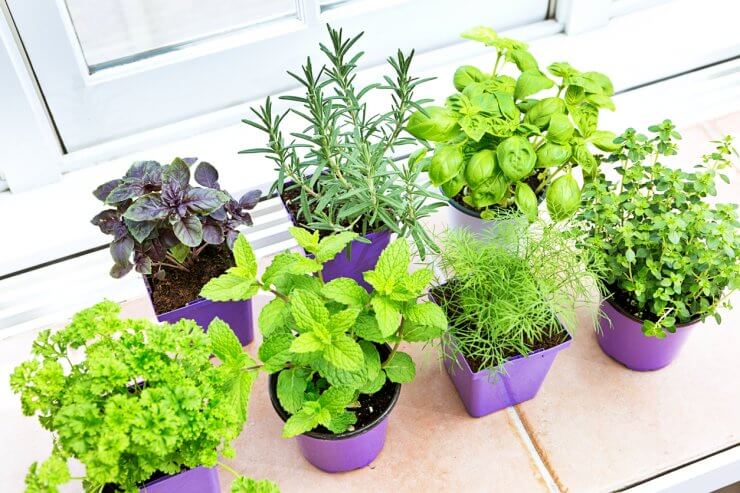
Figuring out how to regulate humidity indoors can sometimes feel like a hopeless venture. Just when you get it right, someone opens the front door, and the whole indoor atmosphere changes. Or here in New England, one day can be 70 and sunny, and the next is 48 and windy.
If I didn’t care about having an indoor herb garden, this might not matter so much. But most herbs enjoy a fair bit of humidity, as well as sunshine and warm temperatures. Regulating temperature is easy enough, thanks to modern home heating systems. And if your herbs don’t get enough sunlight, you can always supplement with a grow light.
In fact, if you live in areas with short winter days, a grow light is a necessary investment for a healthy indoor garden. Humidity, though. That can be a tough one. But it’s not impossible.
Discover the 3 top options for growing vegetables indoors—when you access the FREEBIE Growing Vegetables Indoors for Beginners, right now!

How to regulate humidity for your indoor herbs
In considering how to regulate humidity, one of the best things you can do is either plant your herbs in individual pots or plant multiples of the same plant in larger pots. For example, rosemary likes drier conditions, and parsley enjoys humidity, so you wouldn’t want to plant them together. You could, however, plant two parsley plants together or even with basil.
That also brings up the idea that it’s hard to keep the humidity at “perfect” levels unless you live in a hermetically sealed home. For your herbs, though, you can create micro-climates, so they get the humidity they need.
If you can, place your herbs in the kitchen where you generate humidity from boiling pasta, doing dishes, cooking your frozen vegetables, and other kitchen activities. It’s probably the most humid room in your home except for possibly the bathroom when you take a long, hot shower.
Another simple trick is to elevate the herb pots above their saucers with a few stones and add a little water to the saucers. As the water evaporates, it creates a bit of humidity for your herbs. Be careful not to overfill the saucer, as you don’t want the bottom of your herb pot sitting in water. That’s a recipe for root rot, especially for plants like basil.
If you want to get a little more active with creating a humid environment, an electric humidifier is an option. Just watch out for condensation in the area, as that could lead to mold. You’ll also need to clean most humidifiers somewhat regularly to prevent the growth of bacteria.
One last option is to use an old-fashioned spray bottle and walk around misting the air near your herbs every day. Or you could move to a tropical island.
So when it comes to how to regulate humidity, you do have some options. I’m always into trying the free ideas first, but if you find that they aren’t working, humidifiers are relatively inexpensive, and they can be good for the humans in the house, too.
How do you regulate humidity in your home for an herb garden?
Discover the 3 top options for growing vegetables indoors—when you access the FREEBIE Growing Vegetables Indoors for Beginners, right now!





I bought a small basil plant in the produce section of my grocery store. It is hydroponic…a little rootball in a cup. Instructions were to change the water daily. It sits on my sunny windowsill and I give it filtered water regularly…it looks great and I keep taking leaves and it keeps growing…been a month now…happy experiment..glad to have that sunny window…